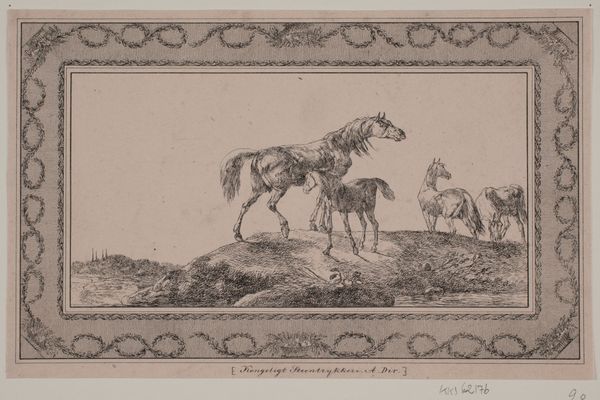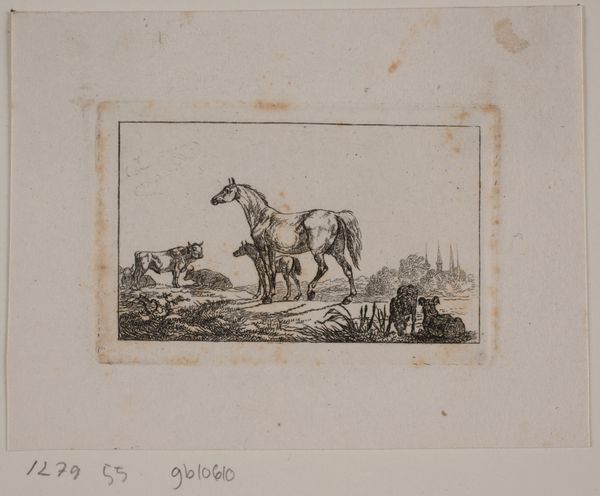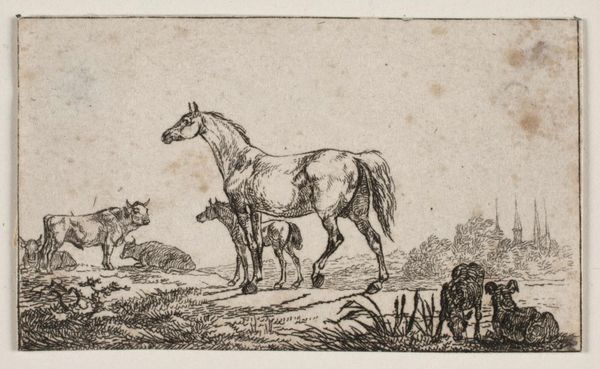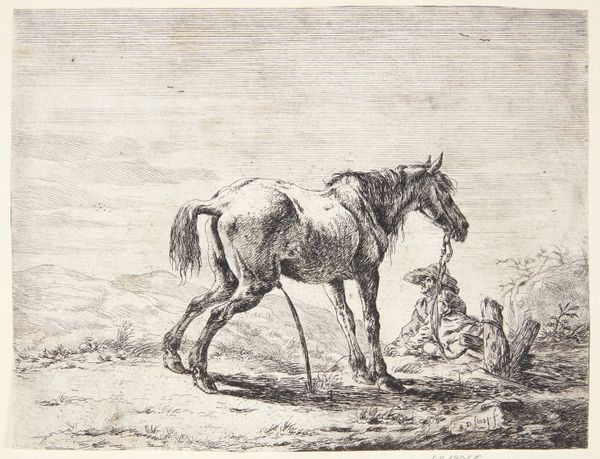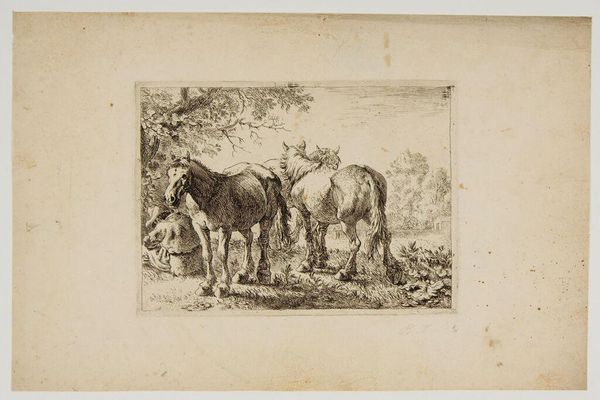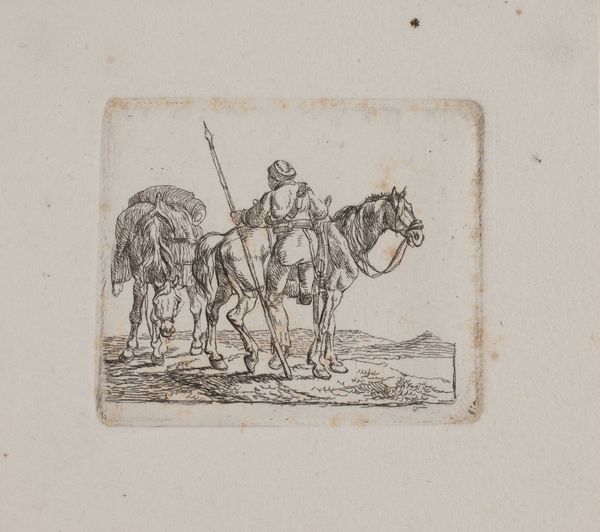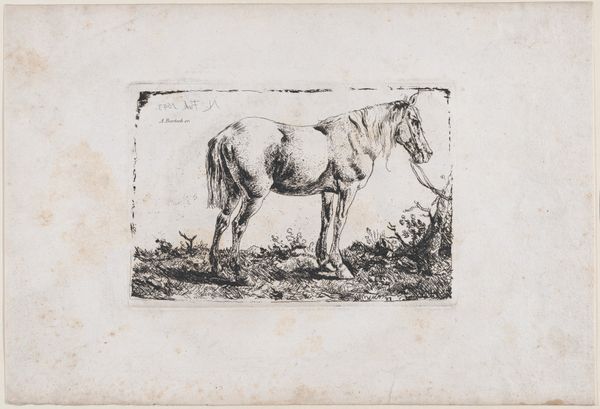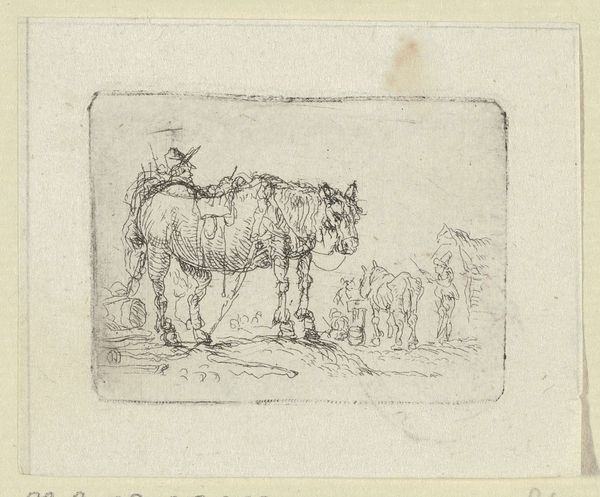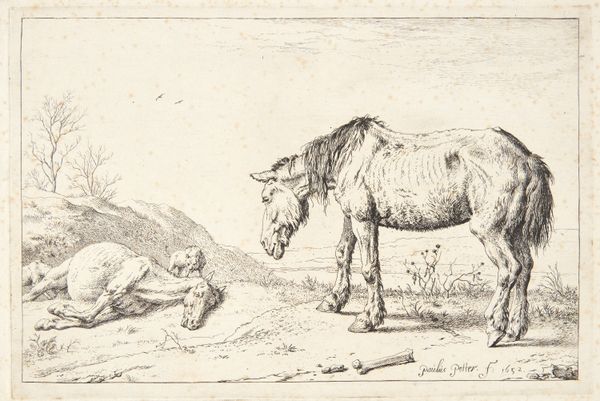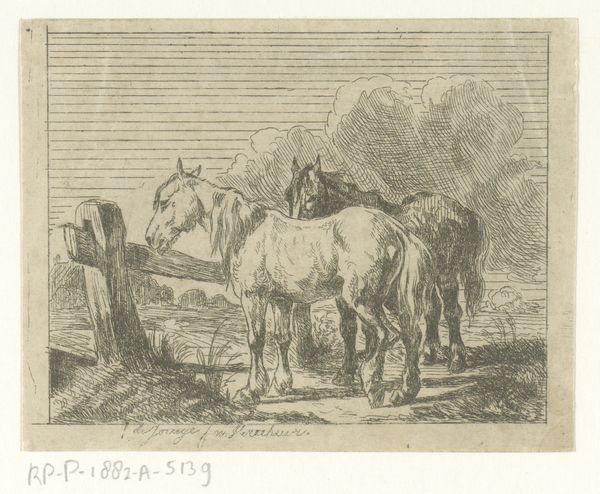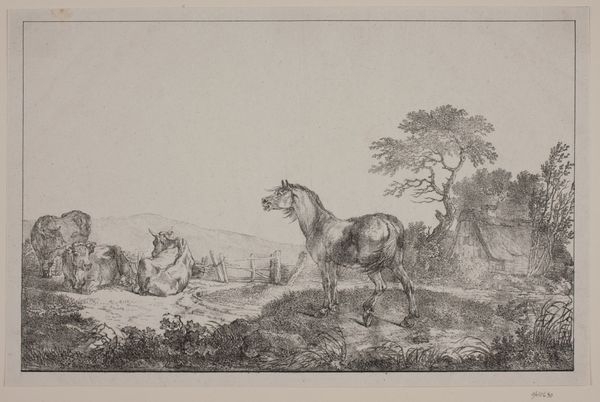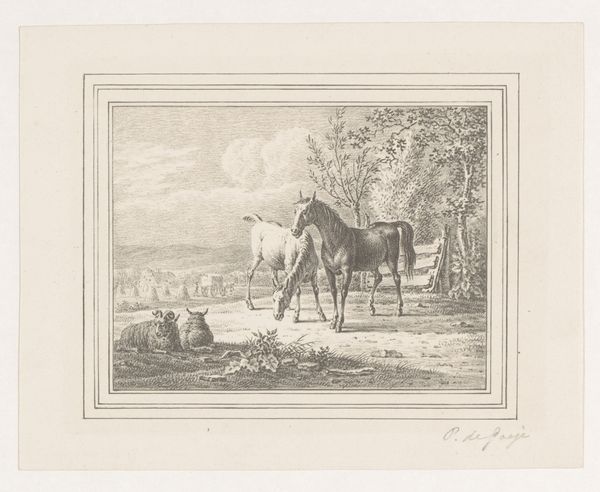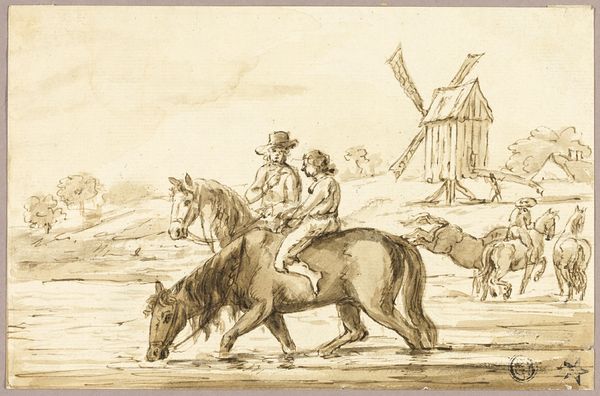
drawing, ink
#
drawing
#
animal
#
landscape
#
figuration
#
ink
#
line
#
realism
Dimensions: 40 mm (height) x 65 mm (width) (bladmaal)
Curator: So, here we have "Gebauer's Visiting Card" by Christian David Gebauer, made between 1818 and 1822. It's a drawing in ink. Editor: It’s remarkably small. The fineness of the line work gives it a delicate quality, like a faded memory. There is a real tranquility in its bucolic composition, even. Curator: I agree. The scale and medium here are fascinating. “Visiting cards” of the era, you see, functioned much like business cards do today; consider its role as an artifact in that economy. Editor: True. And thinking about who Gebauer was as an artist is just as fascinating. Born in 1777 in Silesia, then part of Prussia, and later moving to Copenhagen, situates him at the intersection of artistic traditions and socioeconomic shifts, no? Curator: Absolutely. One of the intriguing aspects of this piece is that he worked as an animal painter attached to the royal court in Denmark. What statements might that selection of subject matter reveal, in relation to its means of reproduction? The print medium allowed for multiples and distribution. How did he reconcile fine art and commissioned labor? Editor: I read it through a lens of land ownership and the Romantic era's idealization of nature. These livestock grazing peacefully in the foreground with a townscape faintly visible, there seems a deliberate contrast. Curator: The landscape format, in terms of production, is so closely tied to class and land ownership, isn’t it? Its popularity with a specific buying group, and Gebauer’s reliance upon noble patrons for commission all speaks to this economic-artistic relationship. Editor: Perhaps this "visiting card" gestures at Gebauer's negotiation of these social dynamics. It served both as a professional signifier and subtle commentary of Denmark society in his time. The use of figuration here, both animal and architectural, creates an immediate social reality. Curator: Indeed. It is quite small, no bigger than a postcard, yet filled with detail. Its intimate scale perhaps makes the vast implications you raised all the more poignant. Editor: Absolutely. I find myself seeing so much history compacted into such a simple image. It truly enriches one’s appreciation, no? Curator: Indeed. This examination has helped me reconsider not only the function of this specific piece, but of such cards’ relationship to the art-historical context.
Comments
No comments
Be the first to comment and join the conversation on the ultimate creative platform.
